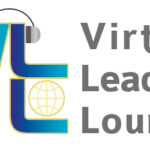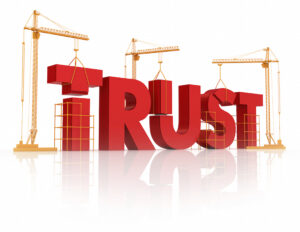How to communicate as a subject matter expert and to influence senior decision makers effectively?
If you are a regular reader of this blog you know that occasionally I share insights from my work as a coach. In such blogs I cover themes which have appeared several times on coaching objectives recently.
One of such themes is the request to support subject matter experts in overcoming their challenges in communicating and influencing senior leadership teams. The issues are mainly in two areas: effective communication and effective influencing. Of course, one is the foundation for the other.

The first exploration
Whenever starting a coaching sequence we explore what the coachee would like to see as the ideal outcome. Very often it can be summarised as the following:
- ‘I would like to communicate in such a way that non-experts are able to understand me and get the right level of input for appropriate and good decisions.’ Or
- ‘I want to be able to influence decision makers effectively through providing sufficient information for their decision-making process.’
Very often their mindset of expertise is holding the belief that one needs to know everything to understand the subject and make a good decision. In addition, they often have a strong need to be seen as expert in the field and have occasionally the fear that decision makers would take a wrong decision if not informed fully.
When exploring the area the person always expresses frustration about their experiences. They feel that senior managers had taken the wrong decision, as well as the feeling that they cannot discuss this subject in the level of detail they think is needed to grasp the complexity.
So, how can one shift such beliefs or needs in order to be more effective in communication and influencing?
New drivers for sustainable shift
In the coaching we discuss whether or not the deeply rooted beliefs and needs are appropriate to the situation. We then explore what other needs would fit their situation better and what beliefs would help them to alter their behaviour. With a strong drive of wanting to do a professional job they construct a new need for wanting to be seen as highly professional in preparing decisions and influencing decision-making in the organisation.
Exploring their belief system they either find or create new beliefs which are much more appropriate for the situation yet easy for them to adapt or to activate in relevant situations. Here are a few examples:
- simplicity is the first step to help non-experts to understand
- too much information muddies the water, reduces clarity
- senior leaders are smart enough to ask for more information, if needed
Helpful realisations
They realise that they are actually seen as an expert, which gives them peace of mind when thinking about the subject. They become conscious that they have the power to show senior leaders the way for a good decision if they can connect to their world and their level of understanding. They also realise that for good decisions only critical pieces of information are needed. Often excessive detail creates more confusion than clarity.
Their new practice
As a consequence of all the reflections, my coachees develop plans for new behaviours based on their insights on beliefs and needs. Some of the most common steps they have implemented follow.
1. Preparation
As always, preparation is key. It requires specific aspects to be considered before engaging in any exchange or conversation. Points the experts consider are:
- Am I fully clear on the outcomes needed in this specific context?
- What do the people involved in the process really need?
- What depth of knowledge do the people have?
- What images and metaphors could help them to connect better with the subject?
Such reflections can help to create a clear segmentation of the information available, into
- top level overview,
- medium level connection of the dots and
- deep level details.
Such segmentation can greatly help to prepare a presentation in a way which allows deeper dives into the subject, if necessary and requested. And for much more detail on this train of thought check out Barbara Minto’s Pyramid Principle.
2. Written communication
Of course, good preparation includes written communication before one does a presentation. Very often the coachees are aware of the practice of writing a one page decision paper in their organisation. In the past, however, they had refused to engage in this practice as they did not recognize the value and additionally thought sedning information out beforehand would steal them the show.
In their new practice they are now using ‘one-pager’ documents. If you’re interested to learn more about how to best create a one page decision paper use this link .
3. Presenting and influencing live
The proof of the pudding is in the eating! Any preparation and pre-meeting communication helps to prepare the ground but the crunch point comes when the presentation takes place in front of the senior audience. The most successful considerations my coachees came up with and tested successfully are:
- starting with the end in mind: create clarity on the outcome/decision required
- exploring the audience’s thinking by asking what they need to accomplish a successful outcome
- applying metaphors of their world to explain critically important aspects
- starting with a helicopter view to explain the full logic required
- keeping elaborations of deeper details always to a minimum
By using this new practice of preparation, succinct pre-meeting written communication, and focused presentation and influencing, my clients developed real mastery in influencing non-expert senior leadership teams.
Does this sound sound like something that affects you too? Would you like to find out more details or how you could apply changes to your particular situation? Then feel free to get in touch with me direct.
Join us online! 
We explore this and other business relevant subjects in our Virtual Leaders Lounge. This is an informal online meeting of maximum 10 business leaders where we discuss challenges in virtual teams and organisations and share best practices. No PowerPoint is used, no prep work required!
Check it out here or register direct so you get the invitations and have a chance to get one of the 10 seats available for a lounge session.



